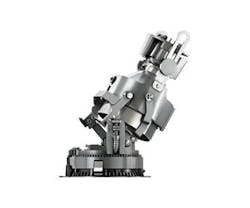NanoLumen is a sophisticated recessed fixture that marries impressive optics and performance features with the smallest aperture on the market for metal halide lamp sources.
Designed around a T-4 ceramic metal halide lamp source, NanoLumen’s barely-there aperture – just 2.5-inches – fuses seamlessly and discreetly with interiors’ ceiling planes, allowing for precise yet flexible point source lighting in any installation.
NanoLumen products meet the industry’s most stringent standards for energy efficiency, providing new options for designers to meet LEED® certification criteria and energy codes requiring ASHRAE 90.1-2001 standards or later.
